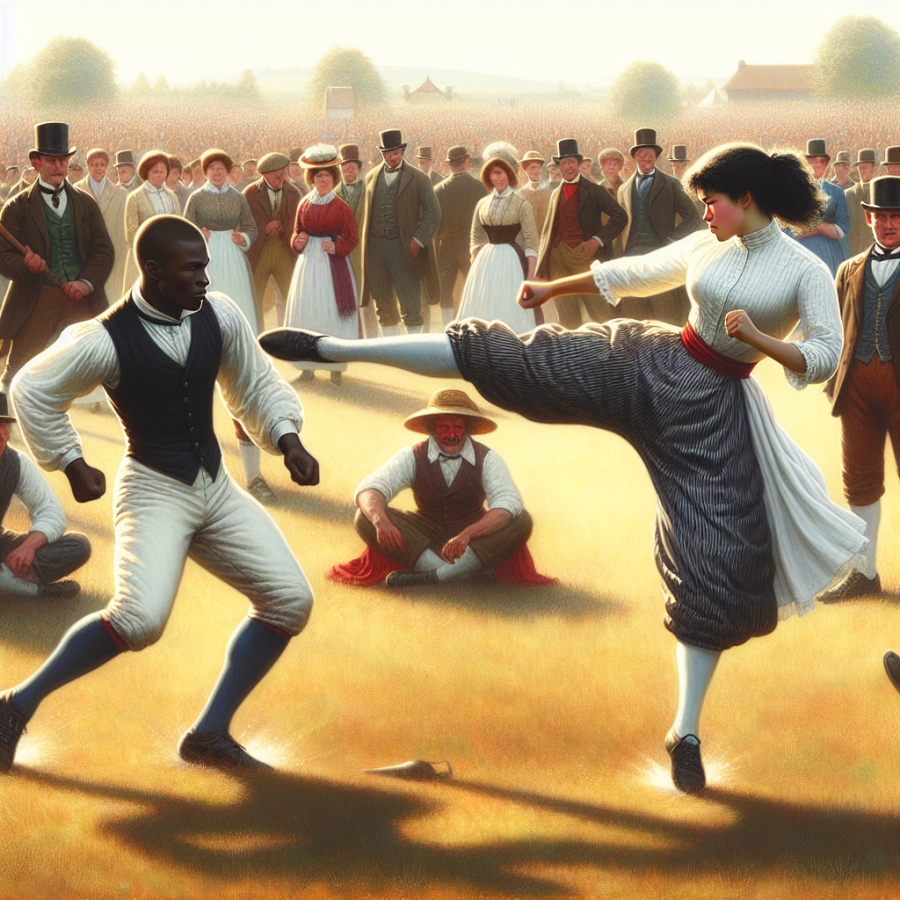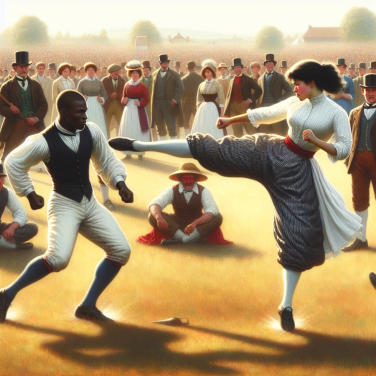The Techniques and Training: How Competitors Prepare for the Bruising Ballet
Shin-kicking, often thought of as a quaint yet brutal aspect of Cotswold Olimpick Games in England, is an endurance test of pain and resilience. To an outsider, it may resemble a chaotic scuffle, but insiders know the meticulous preparation that goes into this historic sport. It is not merely a contest of brute force; contestants, known as 'sticklers', adopt various methods and techniques to condition themselves for the challenges that lie in the ring.
Training for shin-kicking starts with strengthening the lower body. Competitors engage in rigorous workouts that focus on the legs; squats, lunges, and calf raises are staples in their regimen. The aim is to toughen the muscles and build a sturdy base, which can not only take a beating but also deliver forceful kicks. Lower body resilience is crucial, as a shin-kicker needs both the power to attack and the stability to absorb strikes to their own shins.
Pain tolerance plays a substantial role in a competitor's preparation. Techniques for increasing pain threshold often involve controlled exposure to discomfort. Some sticklers may start by lightly tapping their shins and progressively increasing the force to accustom the nerves to the sensation. Others might practice by kicking against trees or other hard surfaces. This kind of desensitization helps competitors maintain composure during the actual event, where the thud of boot against shin can be both painful and distracting.
Endurance is another key factor, and many shin-kickers incorporate cardiovascular exercises into their training routine. Running, cycling, and even skipping rope can enhance stamina, ensuring that a stickler can continue to compete through multiple rounds, often enduring dozens of strikes before a match is decided.
Balancing agility with this endurance is also critical. The ability to dodge and manoeuvre can make the difference between receiving a glancing blow or a direct hit. As such, shin-kickers might perform agility drills, perhaps with the help of cones or agility ladders, to enhance their footwork and reaction times.
In addition to physical preparation, strategic training is essential. Competitors learn to read their opponent's movements, predicting where the next strike will come from and the best way to counterattack. They also practice various kicking techniques, varying their strikes between direct forward kicks and more sweeping motions intended to catch an opponent off-guard.
Read also:
Unraveling the Chaos: The 43-Man Squamish Phenomenon
Understanding the Origins and Rules of Traditional Shin-Kicking
Shin-kicking, as a sport, forms a part of the Cotswold Olimpick Games, a rural set of contests held annually in the Cotswolds of England. The origins trace back to the early 17th century when lawyer Robert Dover was given permission by King James to hold a series of games that would encourage local people to exercise. Though some might dismiss it as mere tomfoolery, the intention was to prevent the youth from turning to more reckless pastimes.
The game is exactly as it sounds—two competitors attempt to kick each other on the shin in order to force their opponent to the ground. It is a test of pain endurance as much as a matter of physical combat, deeply rooted in the pastoral traditions of the British Isles. Despite its seemingly barbaric nature, shin-kicking is governed by a set of rules and traditions that ensure a fair match and serve to minimize the risk of serious injury.
Historically, contestants would harden their shins by hitting them with hammers or by growing layers of scar tissue to reduce sensitivity. Nowadays, safety measures have been introduced. Competitors are required to stuff their trouser legs with straw, which serves as rudimentary padding. Additionally, soft-toed shoes, rather than steel-capped boots, are mandated to protect the competitors.
The contest typically begins with the ‘stickler,’ the official referee, overseeing the event. Competitors must hold each other’s collars and attempt to trip or throw their opponent to the ground using their legs only. To score a point, a ‘throw down’ must be executed, whereby an opponent is properly brought to the ground with both his or her shoulders touching the ground. The combatants go for the best of three falls.
The nature of the combat in shin-kicking may appear to lack finesse to the uninitiated observer, earning it the moniker "The Bruising Ballet." However, it requires a combination of strategy, balance, and pain tolerance. Experienced competitors develop techniques to shield their own shins while delivering effective blows to their opponents. They also learn to fall in a manner that minimizes potential injuries—a skill that has parallels in martial arts like judo.
Moreover, shin-kicking isn’t a mindless endeavor of brute force; it is a psychological battle. Competitors engage in a mental tug-of-war, each trying to outlast the other’s pain threshold while managing their own discomfort.




